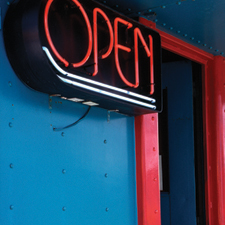
Open to the Public
Alberta
... a place is open to the public [within s. 130 of the Criminal Code, R.S.C. 1970, c. C-34] when the public, as such, are invited to come, even though certain restrictions are placed in their way, and even though certain small sections of the public are not invited. I understand the use of the word “public” here as being in distinction to the word “private”. A place that is open to the public is a place that is open to persons generally, rather than open to certain specific individuals.
R. v. Campbell |
1972 CarswellAlta 125 (Alta. Dist. Ct.) at para. 14 |
Kerans Dist. Co. J.
Ontario
Nor ... does the wording of s. 135 [of the Courts of Justice Act, R.S.O. 1990, c. C.43] dictate that to be “open to the public” the hearing must be located within Ontario. My colleague effectively reads words into s. 135(1) that are not there. He reads the section as saying that all court hearings shall be open to the public “at a location in Ontario”.
Parsons v. Ontario |
2015 CarswellOnt 3336 (Ont. C.A.) at para. 180 |
LaForme J.A.
... the requirements of s. 135 (1) of the Courts of Justice Act [R.S.O. 1990, c. C.43] were met because there was nothing in the record to suggest that “anyone was excluded from the judge's chambers. No one requested that the appellants personally be permitted to attend on the motion judge with their counsel”. “Absent some evidence of exclusion” [the majority] would not give effect to this ground of appeal ... I cannot acquiesce in an interpretation of s. 135 that results in the conclusion that this motion was “open to the public”. The words “open to the public” should be given the ordinary grammatical sense that best accords with the statutory purpose of s. 135.
. . . . .
... the phrase “open to the public” when interpreted to foster its enormously important purposes must be taken to mean a forum where the public understands it is free to enter without specifically requesting admission.
The narrow interpretation of “open to the public” adopted by the majority will fall short of achieving s. 135's statutory purposes of cultivating public confidence in the courts and fostering public oversight of the work of judges.
Palkowski v. Ivancic |
2009 CarswellOnt 5950 (Ont. C.A.) at para. 22, 26, 27
Juriansz J.A.
... there is nothing in this record that in any way offends s. 135(1) of the Courts of Justice Act, R.S.O. 1990, c. C.43, which provides: “[s]ubject to subsection 2 and the rules of court, all court hearings shall be open to the public.”
There is also nothing in the record which suggests anyone was excluded from the judge's chambers. No one requested that the appellants personally be permitted to attend on the motion judge with their counsel. In short, as the agreed statement of fact provides: “[n]either counsel objected at the time to dealing with the motion in this way”.
... counsel had an obligation to object when before the motion judge. It is inappropriate to raise this procedural objection now for the first time on appeal. If they wanted their motion heard in the courtroom, as opposed to chambers, they had the obligation to tell the judge so at the time ...
. . . . .
Simply because a matter is dealt with in a judge's chambers does not mean the hearing was not open to the public ... courtrooms, and by courtrooms I mean anywhere where judicial business is conducted, are presumed to be open to the public. It is for this reason that whenever a party wishes to have specific persons, or indeed the public, excluded from a courtroom, an application must be made to the presiding judge or an order to that effect.
Palkowski v. Ivancic |
2009 CarswellOnt 5950 (Ont. C.A.) at para. 64, 65, 66, 68 |
MacFarland J.A.